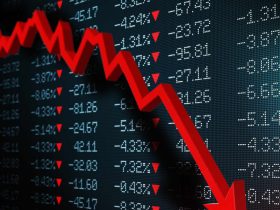This year has posed an unusual array of challenges for investors, and more could be in store. The major stock market indexes are still up in 2023, powered by a narrow slice of technology stocks, but have been losing ground rapidly. Bond yields have risen sharply, topping 5% on some government debt. The economic outlook is uncertain, the U.S. government has been in turmoil, and wars and conflict are spreading across the globe.
“Rarely have I seen such disarray in the world, with financial markets, politically, and otherwise,” says William Priest, executive chairman and co-chief investment officer at Epoch Investment Partners in New York, and a respondent to our fall 2023 Big Money poll.
This fall, there is no predominant mood among the professional money managers surveyed by Barron’s. Some 38% of Big Money respondents say they are bullish about the prospects for equities in the next 12 months. That compares with 38% in the neutral camp, and 24% who call themselves bears.
The bulls see a 14% rise for the
S&P 500 index
by the end of 2024, and a 12% gain by the
Dow Jones Industrial Average.
The bears forecast losses of 3% for the S&P 500 and 2% for the Dow.
Based on their mean forecasts, the bulls project a 15% gain by the end of 2024 for the tech-heavy index, while the bears expect the Nasdaq to decline 4%.
The latest Big Money Poll closed on Oct. 13 and elicited responses from more than 100 professional investors from across the country. Barron’s conducted the poll with the help of Erdos Media Research in Ramsey, N.J. (Complete results are at the bottom of this article.)
High-quality bonds and value stocks have the most fans in our survey. Investors expect a tough year ahead for the more growth-oriented areas of the stock market. Nearly half of poll respondents consider the U.S. stock market overvalued at current levels.
One reason is the recent ramp-up in bond yields, which raises the competition for equities. The Federal Reserve’s policy committee has increased its interest-rate target by more than five percentage points in the past 19 months to cool the economy and bring down inflation, while market forces have pushed up yields on long-term bonds. The yield on the benchmark
10-year U.S. Treasury note
approached 5% this month, up from a paltry 0.5% at its pandemic-era low.
Yields along the Treasury curve are at their highest levels since before the global financial crisis of 2008-09. It’s a return to the pre-2008 world as far as investors are concerned—not the low-growth, low-interest-rate, low-inflation, growth-stock-dominated decade that ended in 2022, two years after the start of the Covid-19 pandemic.
“The single most important variable in investing is interest rates,” says Priest, a member of the Barron’s Roundtable, whose firm manages about $28 billion. “Earnings may be fine next year and beyond, but it’s the present value of those numbers that’s going to be the problem.”
Two-thirds of Big Money respondents say value investing will outperform growth-stock investing in the next 12 months.
And a majority of Big Money investors predict bonds will provide a higher return than stocks in the coming 12 months. While bonds have become cheaper this year (prices move inversely to yields), stocks remain relatively expensive: The S&P 500 trades for 17 times analysts’ 2024 consensus earnings estimate.
On average, Big Money respondents have allocated about 20% of their portfolios to fixed income today. “We like bonds, especially when looking at equities that are trading at above-average [valuation] multiples,” says Matt Dmytryszyn, chief investment officer at Telemus Capital, with $3.5 billion in assets under management. “It has been a while since we’ve been able to get this excited about bonds.”
Fixed income might be in greater favor now, but few money managers expect a lost half-decade for U.S. stocks. Indeed, 95% expect to reap a higher return from stocks than bonds in the next five years.
Among fixed-income categories, 40% of managers prefer U.S. Treasuries. They have little credit risk, and yields are at 16-year highs. Another 24% like U.S. investment-grade corporate bonds. Spreads—or the premium yield on riskier bonds over Treasuries or another benchmark—are narrow, given the potential for a recession in 2024, which argues for favoring higher credit quality.
Big Money managers don’t have much duration risk in their portfolios, or sensitivity to changing interest rates. An average of 61% of their fixed-income exposure is in short-term securities maturing in less than three years, and just 8% is in bonds maturing in more than 10 years.
“We’re not sticking our neck out too much on a duration basis,” says Zach Jonson, CIO at Stack Financial Management in Whitefish, Mont. “An inflation spike or some kind of stagflation can happen, and you just have to be more careful than you normally would with duration.”
It’s hard to argue with yields pushing 5.6% on T-bills or 5.1% on the two-year U.S. Treasury note. As for where to park cash, short-term U.S. government bonds and money-market funds are best, according to the survey results.
Nearly two-thirds of Big Money respondents expect the 10-year Treasury note to yield at least 4.5% a year from now, versus a recent 4.8%. The yield still might rise a bit more before trending lower, some respondents say, while noting that it is at, or close to, levels at which locking in yields for the longer term makes sense.
“If we can get a Treasury yielding 5% or above for a decade, that’s pretty darn attractive,” says Jack DeGan, CIO at Harbor Advisory in Portsmouth, N.H. “We haven’t seen that opportunity in portfolios for a long time.”
There is also value in longer-term bonds as a hedge against broader market declines. A broad flight to safety among investors would push bond prices up and yields down.
Investors are split on the odds of a recession in 2024. Some give the Federal Reserve ample credit for managing inflation down without sacrificing the economy, and see a so-called soft landing next year. Others are less sanguine, however, arguing that the impact of higher interest rates has yet to fully hit the real economy and that a recession is a question of when, not if.
Forty-six percent of respondents expect the economy to enter a recession in the next 12 months. But it needn’t be a crisis-level downturn: Just 6% of investors expect U.S. real gross domestic product to contract by 2% or more next year.
“It’s really hard to generate a big recession when there’s that much money flowing into the economy,” says Harbor’s DeGan, pointing to pandemic-era stimulus spending and newer government programs such as the Infrastructure Investment and Jobs Act. “The Fed has raised interest rates dramatically, but our economy is less interest-rate sensitive than it has been in my 40 years in business.”
Both consumers’ and businesses’ balance sheets are in good shape, he says, supporting spending but adding to the upward pressure on inflation. Only 15% of Big Money respondents expect inflation, as measured by the consumer price index, to come in at or below the Fed’s 2% target in 2024. Most see the CPI hanging around 4% this year and slipping to 3% in 2024.
David Poarch, of Native American Fund Advisors in Tulsa, Okla., is concerned about sticky or potentially reaccelerating inflation, noting the trillions of dollars of monetary and fiscal stimulus pumped into the economy during and since the Covid pandemic. That flood of money is still working its way through the real economy, he says, despite the Fed’s rate hikes over the past year and a half. “It’s like the python that ate the pig—the economy needs some time to digest it,” Poarch says.
Stack Financial’s Jonson points to several long-term trends that are inherently inflationary, including the so-called reshoring of supply chains, the costly transition to renewable energy, and aging demographics that are leading to a shortage of labor in many developed markets.
What is the biggest risk facing the stock market? Twenty-eight percent of managers worry most about a potential recession, 26% point to the possibility of higher interest rates, and 16% cite resurgent inflation. This highlights the delicacy of the Federal Reserve’s balancing act. The central bank must tap the brakes on the economy enough to ease the upward pressure on inflation, but not so much as to break things and cause a significant recession.
“The Fed is right to be proactive and [keep rates] higher for longer, so that inflation doesn’t come back,” says Dmytryszyn of Telemus Capital, headquartered in Southfield, Mich.
Most Big Money managers approve of the Fed’s moves to date, with 62% saying its current policy stance is just right. But half that percentage thinks the Fed has tightened too much and risks pushing the economy into a recession.
Nearly all survey respondents think the Fed is just about done raising interest rates, and that rate cuts could be coming next year. More than 80% predict that Fed officials will lower the current federal-funds target range of 5.25% to 5.50% next year by at least a quarter of a percentage point, while 35% expect rate cuts of more than half a point.
Joe Frohna, founding principal and portfolio manager at 1492 Capital Management, based in Milwaukee, notes that the Fed’s first rate decrease of a cycle historically has followed the central bank’s last hike by an average of 7.5 months. That pattern implies a rate cut sometime around the middle of next year.
“For the stock and bond markets to work in 2024, you’re going to need the Fed to step out of the way,” says Frohna. “At a minimum, that means they say they’re pausing, if not [cutting] outright.”
Broader participation in the market beyond the largest stocks would help to extend any rally. The S&P 500’s 9% gain year to date is almost entirely due to advances in a handful of megacap tech stocks including
Apple
(ticker: AAPL),
Nvidia
(NVDA),
Microsoft
(MSFT), and
Alphabet
(GOOGL).
“It’s hard to get excited about a rally when it’s being led by such a narrow group,” says Todd Jones, CIO of Gratus Capital in Atlanta, with about $3 billion in assets. “The valuations of the top 10 companies in the S&P 500 are super-elevated versus bottom 490.”
About 60% of Big Money respondents expect small- or mid-cap stocks to outperform large-caps over the next 12 months. The
iShares Core S&P Small-Cap
exchange-traded fund (IJR) and the
SPDR S&P MidCap 400
ETF (MDY) are ways to play the market’s smaller stocks.
Weatherly Asset Management’s Carolyn Taylor is sticking with Big Tech stocks for now, and waiting for better opportunities to present themselves. These companies have pristine balance sheets and wide competitive moats, and generate a ton of free cash flow, she notes. Should rates fall, however, more-speculative areas in the technology sector could become more attractive, namely shares of the fast-growing but richly valued companies expected to generate the bulk of their profits far in the future.
“We have dry powder in the form of cash and short-term fixed income and are a bit lighter than usual on equities,” says Taylor, whose Del Mar, Calif.–based firm manages about $1.2 billion. “So, if we do have a recession and the Fed starts to cut interest rates, we have the ability to shift.”
Epoch’s Priest is also bullish on Microsoft and Alphabet, both plays on 2023’s hottest investing theme: artificial intelligence. “They’re going to win with AI,” he says. “From a long-term investment perspective, you want to be exposed to those.”
Nvidia stock has rallied more than 175% this year, also fueled by enthusiasm for AI. But the stock isn’t so popular with the Big Money crowd: 29% of managers call it the market’s most overvalued stock. Nvidia sports a price/earnings ratio of 27 times the next year’s estimated earnings.
Energy stocks are Big Money investors’ favorite sector for the year ahead, designated as such by 33% of respondents. They like the sector for its relatively discounted valuation, high cash-flow yields, and generous dividend and share-buyback policies. Exposure to a potential spike in oil and gas prices also makes energy a defensive play.
Poll respondents see West Texas Intermediate, the U.S. benchmark oil price, rising to $91 a barrel in a year from the mid-$80s today. “Energy is both cheap and attractive as a hedge,” says Jonson, whose firm has about $1.8 billion in assets under management.
Gratus’ Jones also likes midstream energy companies for their dividends and contractual cash flows tied to the volume of oil and natural gas that flows through their pipelines. Midstream companies include
Williams Cos.
(WMB), which yields 5.2%;
Oneok
(OKE), yielding 5.7%; and
Kinder Morgan
(KMI), yielding 6.7%.
Higher interest rates and bond yields have weighed on other income-generating assets, including dividend stocks. DeGan sees opportunities in the shares of quality companies with durable businesses that have seen their valuations fall and dividend yields rise this year. He points to
Brookfield Infrastructure Partners
(BIP), with a 6.7% yield;
Pfizer
(PFE), paying 5.4%; and
NextEra Energy
(NEE), yielding 3.4%.
Plenty could go wrong for the markets and world in the next year. For investors in stocks and bonds, a focus on attractive yields and undervalued assets seems like a sensible game plan.
The Markets
Read the full article here











Leave a Reply